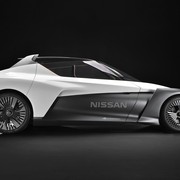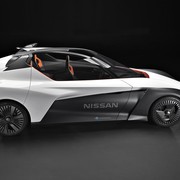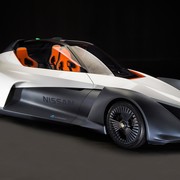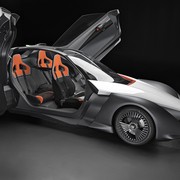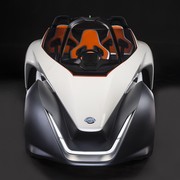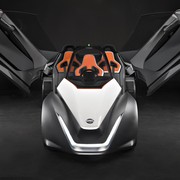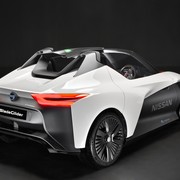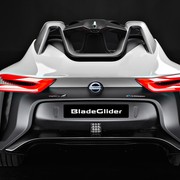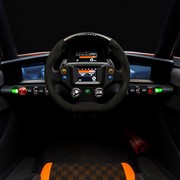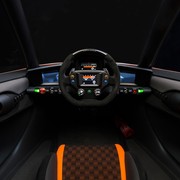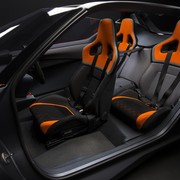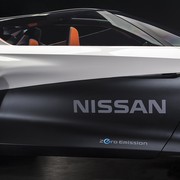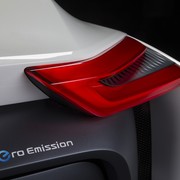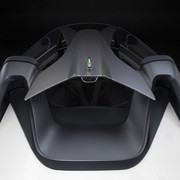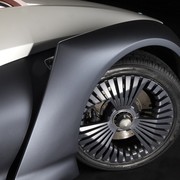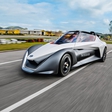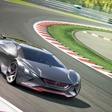
Only a day prior to the grand opening of the Olympic Games in Rio de Janeiro, Nissan unveiled a working prototype dubbed BladeGlider, combining the zero-emission future of the brand with high-performance in a revolutionary sports car design.
The vehicle was developed from a concept car that was first shown at the Tokyo Auto Show in 2013. It's been brought to Brazil to dub as a symbol of future technologies that will combine Intelligent Mobility, environmentally friendly impact and sports-car driving capabilities.
BladeGlider is being introduced with an advanced chassis configuration with a narrow front track and wider rear track for optimum aerodynamic efficiency and handling stability during the drive. High-waisted, rear-hinged dihedral doors make for a dramatic entry and exit to the cabin, while the open roof has been reinforced with an integrated roll-over protection structure. The driver and the passengers are able to enjoy the exhilaration of an open-topped race car and the safety of a coupe at the same time.
The driver is able to manage all the BladeGlider's systems via wheel-mounted controls, while an advanced display shows information such as speed, state of battery charge, regeneration mode and torque map. Next to the main display, there are two more screens, with the images of rear-view cameras mounted just behind the front wheels. The driver's sitting position is in arrowhead formation, slightly in front of two passengers, who thus benfit from having some extended room for the legs. Because of the seamless cockpit windscreen, all three occupants are able to enjoy a panoramic view of the surroundings.
Nissan BladeGlider is 100 percent electric – the powertrain has been developed by Nissan's technical partner for the Nissan BladeGlider project, UK-based Williams Advanced Engineering. The rear wheels' drive is provided by two 130kW electric motors, one for each wheel. The demonstration model's maximum speed is over 190km/h, taking less than five seconds to get from 0 to 100km/h. Power is supplied by a high performance, five module lithium-ion 220kW battery, with a bespoke cooling systems developed for both the battery and the motors.
Nissan is bringing two BladeGlider models to Rio – on will be put on static display, while the second will be offering dynamic rides to media and VIPs.
